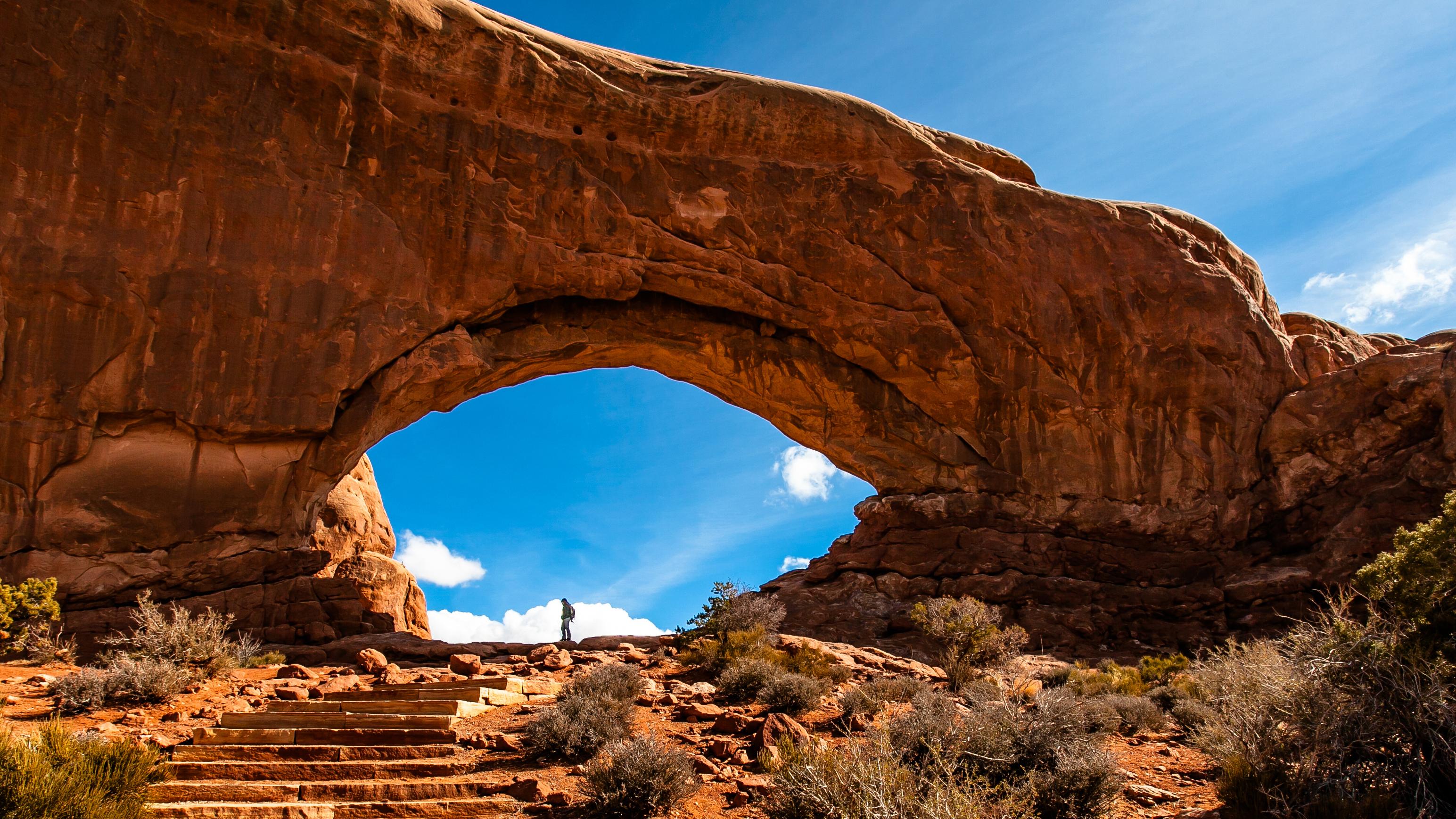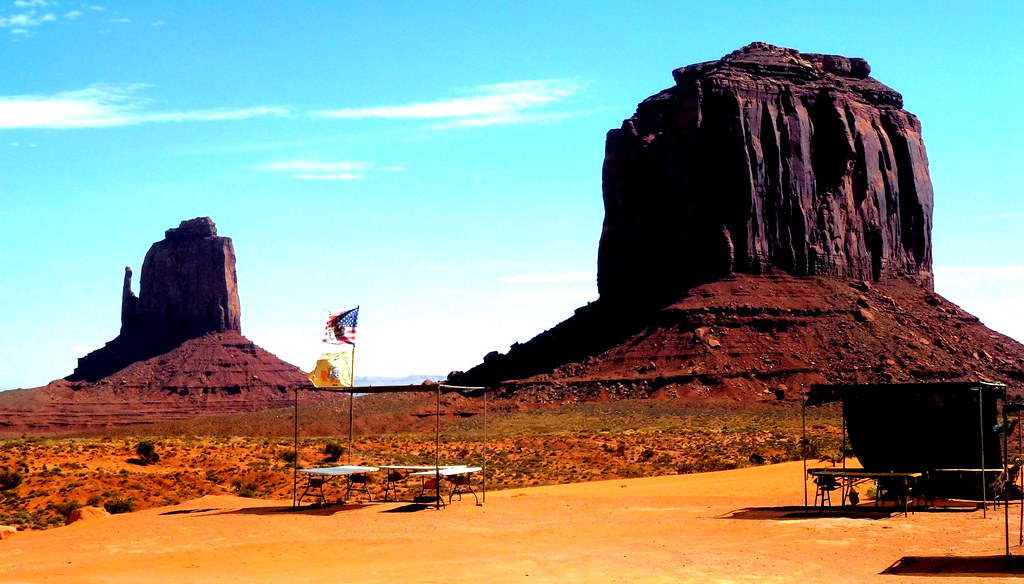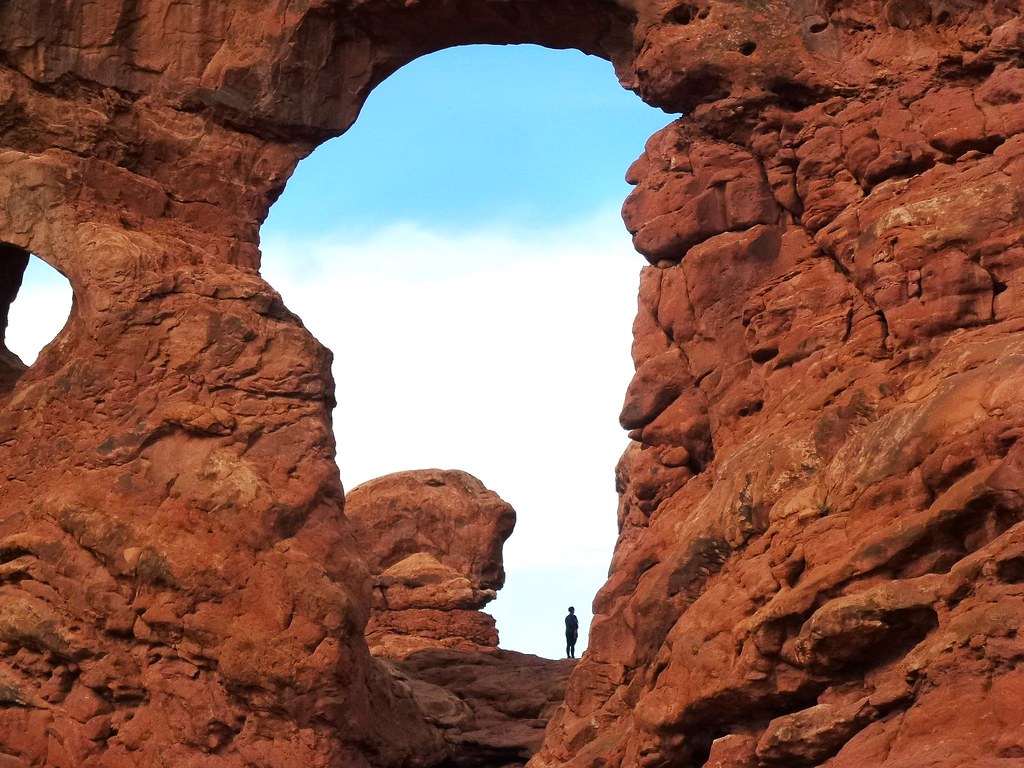Utah is home to some of the world's most astounding natural architecture. Graeme Willingham explores the canyons of the Quaker State.
It is zero degrees Celsius, confirmed by the layer of frost on the exposed roots of a sentry Ponderosa pine clinging to the top of the fragile ridge. We’re some thin-air 2.5kms above sea level, at 7 o’clock, on a Fall morn. The sun had just cleared the horizon and started its work in the clear sky to light the limestone pinnacles, known as hoodoos, in Utah’s Bryce Amphitheatre.
This is the time of the day when the sun seemingly paints the hoodoos translucent white, orange, red or pink.
We’re told the hoodoo tag derived from voodoo spirituality. Seems the ancient Paiutes Indians believed the pinnacles, or spires, are legend people turned into stone by coyote as a punishment for bad deeds. They are up to 60m high and spread across a semi-circular steep slope (hence the amphitheatre) from the rim to the canyon floor 240m below.
Bryce Amphitheater is 8km long and 2km wide and belongs to a series of amphitheaters spread over 30km north-to-south within Bryce Canyon National Park, which boasts it has the greatest concentration of hoodoos on Earth.
The hoodoos may be eons old, but they are ‘alive’ today.
BCNP explains: ’Hoodoos don’t grow like trees but are eroded out of the cliffs where rows of narrow walls form. These thin walls of rock are called fins. Frost-wedging enlarges cracks in the fins, creating holes or windows. As windows grow their tops eventually collapse, leaving a column. Rain further dissolves and sculpts these limestone pillars into bulbous spires called hoodoos. The delicate climatic balance between snow and rain ensures that new hoodoos will emerge while others become reduced to lumps of clay.’
Bryce, as well as The Grand Canyon, Monument Valley, Lake Powell, Antelope Canyon, The Arches, Canyonlands, Mesa Verde, Capital Reef and Zion, is on the itinerary of our 10-day coach tour … plus, vast desert plateaus and their ‘pop-up’ ranges of rock, sandstone, or powdery clay of various hues we negotiated to reach the next site.
They’re all clean-air natural wonders, mocking the man-made ‘Casinoland’ of Las Vegas where we started and finished the 3,300km tour.
As well as Bryce’s rim walk, two pathways wiggle their way down through squadrons of shoulder-to-shoulder hoodoos to the canyon floor. They show off an array of columns and windows which change their mood as the sun moves across the sky. In the winter, they wear white hats.
If walking is not your thing, a shuttle bus stops at five lookout points, including Sunrise and Sunset, so defined by their time-of-day vantage. In all, there’s 100kms of walking tracks in the Bryce Canyon park.
As we began a walk along the amphitheatre rim from Sunrise Point to Bryce lookout, about 2km away, our wide-angle Wow factor is broken by a bridal couple posing for their photographer, just 30m below on one of the pathways.
Our first thought was this was an appropriately colourful backdrop for photographing a bridal couple, dressed in their monotone white and black outfits. Unsurprisingly, we later learn the pathway at that point is a go-to studio for wedding photographs. Someone suggested the bride was an Aussie. We wonder what the lovely couple would do with their hoodoos photographs … keep them under wraps for their photo album cover, shoot them onto a screen at the wedding reception, drop them onto their social media platforms for the world to see?
Then it ‘dawned’ on us that from our place on the rim, the tiny couple accentuated the scope of this dramatic crescent arena by providing a sense of scale, contrast and texture.
Size, scale, and perspective had become considerations in our appreciation of the BIG attractions we visited in this desert zone linking the national parks of Colorado, Utah, Nevada and Arizona. Perspective is easily lost after gazing up at 350m red rock walls for a couple of hours or surveying the expansive panorama from up top, on a canyon-edge lookout, or from a helicopter, when a way-below river or hikers track provides the discerning perspective.
In the scale of the Southwest’s big attractions, Bryce is tiny … 30kms compared to The Grand Canyon which meanders over 400kms.
Bryce, though, became a top experience, probably because of the amphitheatre’s all-in-one view.
And, we had two nights there and free time to do our own thing … like absorb the spirit of the hoodoos, do the rim walks/lookouts, wander down the paths to the base, stargaze, or watch the relaxed long-eared mules grazing around our near-rim oldy-world lodge. At the other locations, there was limited free time to explore on your own.
But that’s coach touring … experience the key sites, inclusion of transport, up-close accommodation, some meals, park entry fees, tour commentary and some guided side tours, like, in our case, floating down the Colorado, exploring Monument Valley, edging our way through the slits of Antelope Canyon and a geologist’s interpretation of the layers of the 500million year-old Grand Canyon. And no baggage handling!
We had explored a self-drive option late in the piece only to find there was no accommodation available within the national parks, but the coach company could provide that. This meant we had the rim views to ourselves before the tourists arrived, and after they left.
As for scale, our room at Grand Canyon was just 30m from the rim, but a 2m steel footpath lamp was in direct view line from the room. Yes, the pole became object d’art for a photo.
While the Spruce Tree House, the third largest and best-preserved cliff dwelling in Mesa Verde National Park, was scale to itself, a lone canoeist was scale to a sheer shiny red and dark purple cliff face when we drifted quietly by on the Colorado River, near Horseshoe Bend. (One clown in our group suggested the rock walls there were “tall for their height”.)
To demonstrate loss of perspective, our river float guide produced photographs of her family posing in rock wall features which we thought were just cracks. What appeared as a small fall-away scar halfway up was apparently the size of a soccer pitch. Tourists on the Horseshoe Bend lookout on the rim way above were silhouetted black ants to our naked eye.
People, too, provided scale at the sculptured rock scenery of Arches National Park, hosting some 2,000 arches, ranging in size from 1m to 100m. The walk-through Turret Arch, for example, is 20m high and 11m wide. Conveniently, a sole 2m person (estimate) walked into the arch … and the viewfinder.
Putting people in the frame for scale’s sake wasn’t as convenient for the sandstone buttes at Monument Valley – the set for many early Western movies. The day was saved by a rudimentary unattended canvas car park shelter and tables, in the foreground. The dusty wind-swept set was animated by flapping flags of the USA and of the local Navajo people who conduct tours on this land, their reservation.
A red STOP sign, a fire hydrant and a highway identification sign also could have been adopted as odd-ball modern foreground reckoners to an ancient rocky range.
Now, while we played with scale, the memory, as well as the memory card, is dominated by scenes where no props were available … or needed.
Which leads to describing all those BIG scenes.
Aspiring travel writers are told to tone down the superlatives, otherwise their work will resemble a promotional marketing brochure. It’s nigh-on impossible, though, not to classify the Southwest’s very special wonders. And there’s nothing to say you cannot report what fellow travellers on the ‘Hard Rock Tour’ (as we dubbed it) have to say about the scene here at Bryce, or at those other sites.
So, in THEIR words: “Awesome, massive, breath-taking, spectacular, unbelievable, gobsmacking, enormous, huge, dramatic, surprising, unforgettable, beautiful, stunning, sublime, extraordinary, stupendous, engrossing, incomparable, overwhelming, sensational, better-than-expected, unimaginable ….”.
One, a globetrotter, added: “The sheer breadth, scale and majesty of the parks blew us away”.
And you can’t help but agree. So maybe there are times when rules should be broken.
Words: Graeme Willingham
======
The author was a paying guest on an Insight Vacations tour.
Graeme Willingham is a former daily newspaper journalist in Melbourne, a long-serving public relations consultant in the travel industry and an occasional travel writer.
The author was a paying guest on an Insight Vacations tour.
Graeme Willingham is a former daily newspaper journalist in Melbourne, a long-serving public relations consultant in the travel industry and an occasional travel writer.













No comments:
Post a Comment